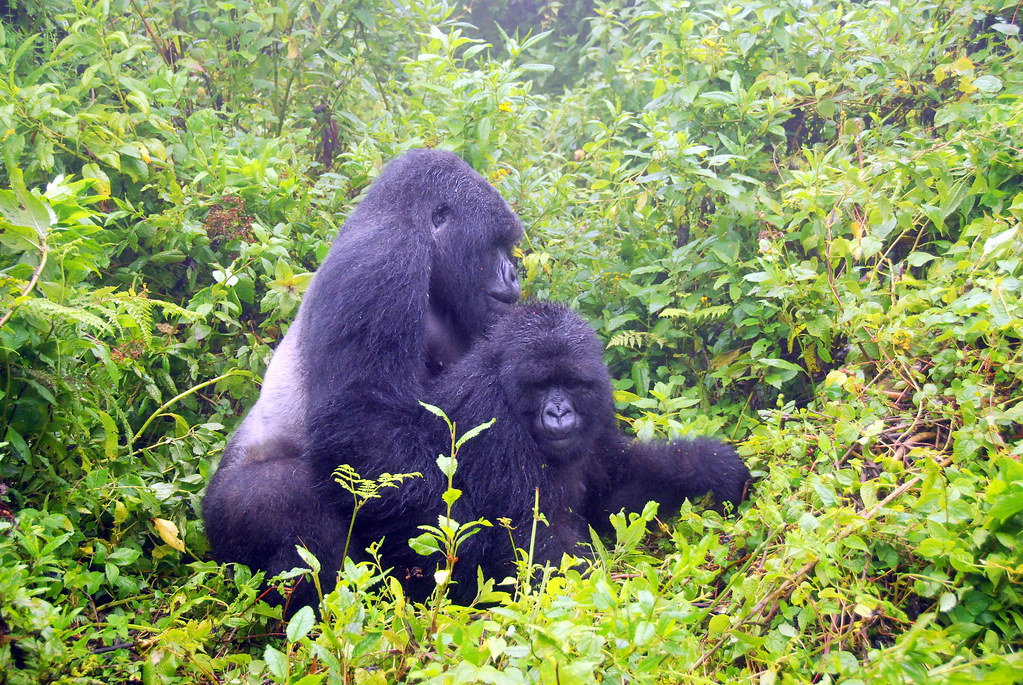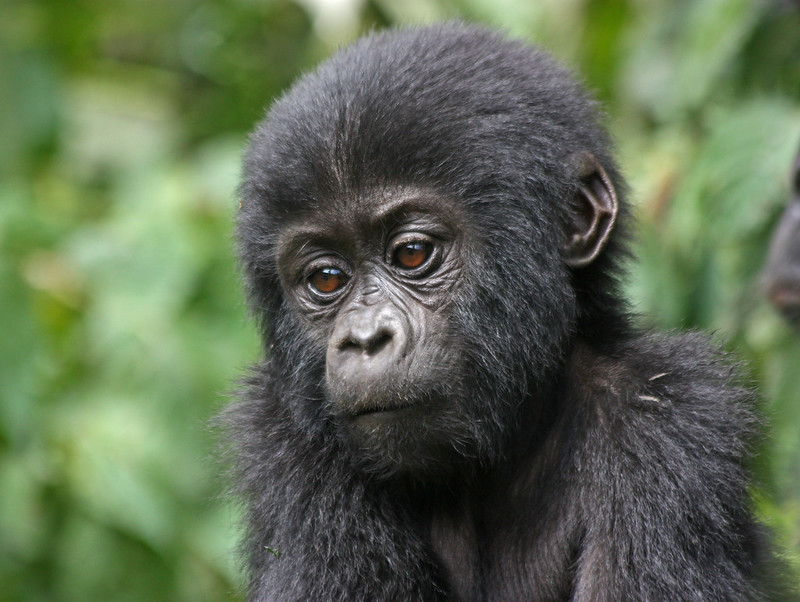Are Gorillas aggressive? Dangers and Attacks of Gorillas
Are Gorillas aggressive? although gorillas are not the colossal, fearsome creatures they were originally perceived to be, they remain formidable animals capable of being dangerous when confronted. Silverback males are exceptionally powerful, and their elongated canines can inflict severe injuries. When two gorilla groups encounter one another, the leaders frequently engage in physical confrontations, and silverbacks have been documented to kill newborns upon assuming control of a group. Although gorillas are mostly placid creatures, they may exhibit aggression under specific circumstances. It is crucial to acknowledge that they are wild animals and must be approached with caution and respect.

There are some essential facts to understand about gorillas. Males may exhibit aggression when they perceive a threat to their group, regardless of whether the threat is actual or imagined. Therefore, it is crucial that these creatures are gradually acclimatized to humans prior to permitting visits. Otherwise, the group leader may become alarmed and retaliate. This has historically been a significant issue for hunters, who have encountered gorillas and sustained severe injuries as a consequence. In summary, it is prudent to exercise caution when interacting with gorillas and proceed gradually.
At what age do gorillas exhibit aggressive behavior?
Gorillas are widely recognized as gentle giants. Despite their formidable appearance, they are, in fact, friendly beings that want solitude. Nonetheless, it is crucial to acknowledge that they are wild creatures, and, akin to all wild species, they may exhibit aggression if they perceive a threat. Should a silverback from an external group attempt to abduct a female, or if a human encroaches onto their area, the gorillas would initially endeavor to deter them with vociferous grunts and the destruction of foliage. If that fails, the silverback will rise on its hind legs and thump its chest in a display of dominance. These measures indicate that the gorilla is prepared to protect itself and its family from a specific threat. When in the wilderness, maintain a respectful distance from gorillas and honor their domain.
Can habituated gorillas constitute a danger?
Accustomed gorillas are friendly.
Gorillas are arguably among the most misapprehended creatures. Despite their frequent depiction as perilous and hostile, gorillas are, in reality, gentle giants. By nature, they are timid and reserved, typically exhibiting aggression only when they perceive a threat. In reality, wild gorillas are not nearly as perilous as they are frequently portrayed. The overwhelming majority of encounters between gorillas and humans have transpired in zoos or similar controlled environments, where the animals have been stripped of their native habitats and social frameworks. When gorillas inhabit their natural environment, they present minimal risk to people. Many gorillas have been effectively acclimated to human presence and can be safely watched in their natural habitat. Habituation of gorillas is an extensive and intricate process, yet it can yield gorillas that are amicable and used to humans. Numerous nations with substantial gorilla populations, including Uganda, Rwanda, and the Democratic Republic of Congo, provide habituated gorilla tracking experiences for tourists. These distinctive chances enable individuals to observe gorillas in their natural environment and get knowledge about these remarkable creatures.

Strategies for Preventing Gorilla Attacks
Despite being gentle giants, gorillas remain wild animals and can pose a danger if they perceive a threat. When fortunate enough to observe gorillas in their natural habitat, it is crucial to adhere to certain guidelines to prevent an assault. Initially, observe the gorilla’s body language. Should they commence beating their chest or exhibit other hostile actions, it is advisable to withdraw. Avoid direct eye contact and displaying your teeth, as these may be interpreted as threats. Avoid using flash photography or spotlights near gorillas, as this may induce insecurity and provoke an aggressive response. Adhering to these few instructions will ensure a secure and unforgettable experience with these remarkable beings.
young gorilla
Gorilla Trekking and Safety Considerations
Gorilla trekking is an extraordinary adventure that enables intimate encounters with some of the world’s most captivating animals. It is essential to acknowledge that gorillas are wild creatures, and it is imperative to respect their territory. Tourists must consistently keep a minimum distance of 7 meters from gorillas and must refrain from any attempts to contact them. Gorilla trekking is available at Bwindi and Mgahinga National Parks in Uganda, Volcanoes National Park in Rwanda, and Virunga National Park in Congo. Adhering to these straightforward recommendations will guarantee a safe and pleasurable experience for both you and the gorillas.
Causes of Gorilla Anger, Aggression, and Danger in Gorilla Trekking Visitors Experiencing Delays in Observing Gorillas Post-Habituation
Upon concluding the habituation process, gorillas may revert to their native state if human visitation diminishes significantly.
During the COVID-19 lockdowns, the tourism sector was especially apprehensive. Concerns arose that habituated populations would revert to their native state when visitors ceased to come for extended durations. The national parks promptly deployed ranger teams to monitor all habituated gorilla populations.
Wearing Inappropriate Safari Attire
When observing gorillas in their natural environment, it is crucial to choose appropriate attire colors. Vivid colors will render you conspicuous and the primary target should the gorillas choose to charge. Despite their typically cheerful demeanor, they may want to investigate you among all trackers. Tourists are typically advised to wear muted colors, such as green or brown, that harmonize with the woodland habitat of the primates. By doing so, you will not only evade attracting unwarranted attention from the gorillas, but you will also diminish the likelihood of startling them and provoking aggression.
Gorilla Eye Contact
Establishing a connection with gorillas is appealing due of their close genetic relationship to humans. Nonetheless, it is crucial to acknowledge that they remain wild animals and must be treated accordingly. A primary method of demonstrating respect for gorillas is to refrain from direct eye contact. In the wild, gorillas utilize eye contact to establish dominance and confront other members of their group. Direct eye contact with a gorilla by a person may be perceived as an indication of aggressiveness. Although gorillas are often reserved animals, they remain wild creatures deserving of respect. When in close vicinity to gorillas, it is advisable to refrain from initiating eye contact and to provide them with the necessary space.
Providing Gorillas with the Space They Require
Providing gorillas with ample freedom to navigate freely within their natural habitat is essential. If they perceive encirclement, they may grow upset and may resort to aggression. Consequently, national parks restrict the daily visitation of tourists to specific gorilla groups. All individuals are required to uphold a safe distance of 7 meters. By honoring the gorillas’ territory, we can safeguard both their well-being and our own.
Do Not Touch the Gorilla
Gorillas are among the most friendly and affectionate beings in the animal kingdom. They possess significant intelligence and engage in intricate social interactions. Consequently, it is easy to overlook that gorillas remain wild animals. Should you approach a gorilla or feel inclined to touch one, bear in mind that they are wild animals. The silverback gorilla serves as the group’s leader, consistently observing his surroundings. Should he observe you approaching one of his gorillas, he may exhibit protective and violent behavior. Therefore, refrain from touching a gorilla, regardless of the allure it may present. Although they may appear innocuous, they remain wild creatures.
Gorilla Charge: Guidelines for Response and Avoidance; Maintaining Composure is Essential
It is crucial to maintain composure when in the presence of a gorilla. Although challenging in the presence of a massive, potentially perilous animal, it is imperative in this context. Gorillas derive pleasure from a sense of dominance, and exhibiting worry or fear will only provoke the gorilla to become aggressive. Instead, descend and minimize your physical presence. Observe the trees and remain vigilant, but avoid direct eye contact with the gorilla. Do not run, as gorillas are significantly faster than humans, and attempting to escape will activate their pursuit drive. If you can maintain composure and passivity, the gorilla will ultimately lose interest and depart. Gorillas cease their assault when the individual they are attacking no longer poses a threat or challenge. Provided that you refrain from resisting or attempting to flee, you should remain secure.
Heed the instructions provided by your safari guide.
Are Gorillas aggressive, Rangers prioritize your safety above all else during your safari. In the unlikely occurrence of a gorilla exhibiting aggression, the Rangers will initially endeavor to redirect its focus from you to themselves. They will contemplate discharging a firearm into the air to deter the primate as a final option. Throughout our extensive experience in safari operations, we have never encountered a Ranger/Guide compelled to take such action. You may be confident that you are well cared for while on safari with us.
